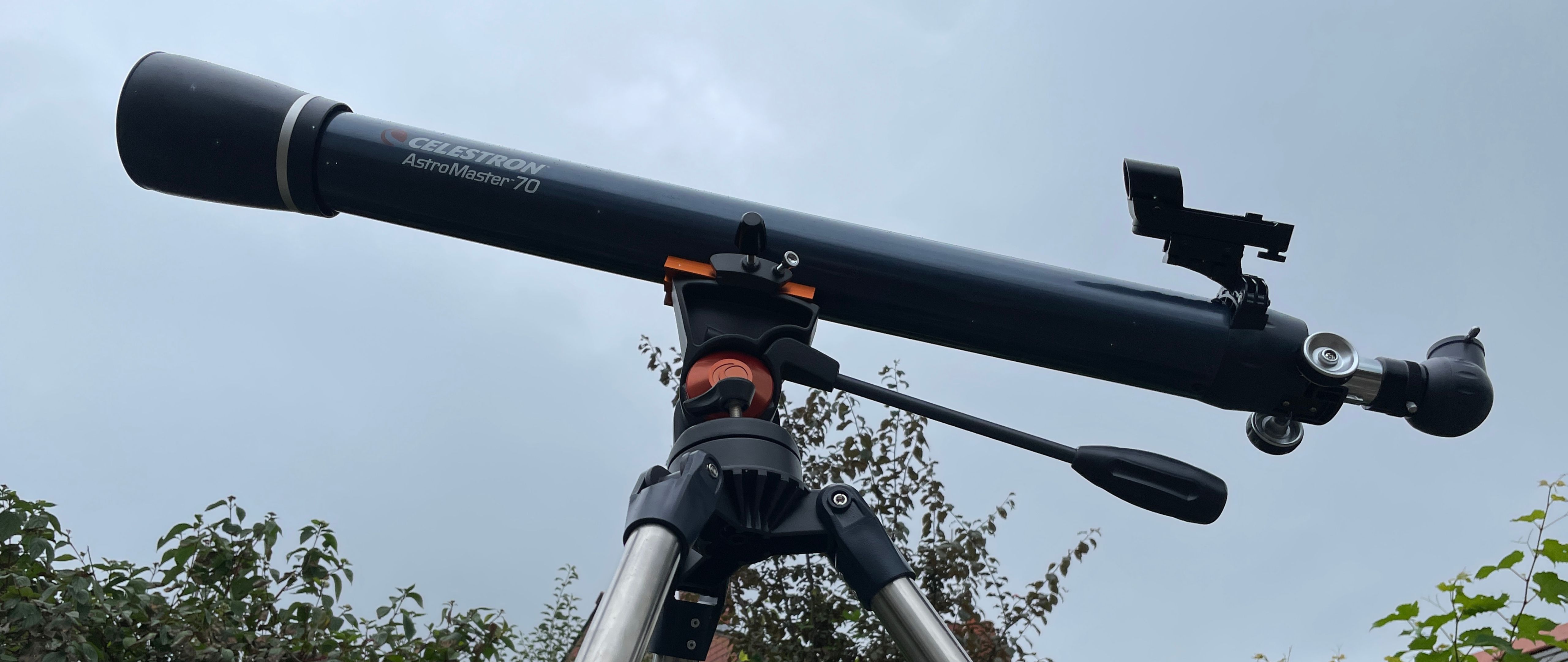Space Verdict
This lightweight 2.7-inch/70mm achromatic refractor uses its relatively long length to produce natural-looking views of planets and the moon, but with anything else it’s underwhelming. It’s also rather difficult to lock onto targets.
Pros
- +
Avoids distracting 'false color'
- +
Low price point
- +
Lightweight design
- +
Collapsible tripod
Cons
- -
Pan handle lacks precision
- -
No slow-motion controls
- -
Lacks versatility
- -
Deep sky objects are dim
Why you can trust Space.com
The Celestron AstroMaster 70AZ telescope ($189.95/£130) is a small and reasonably lightweight 2.7-inch/70mm achromatic refractor aimed at beginners after true-color views of solar system objects. It comes with a tripod that can be used at either full or half-height and in the box are two eyepieces and a finderscope.
Optical design: Achromatic refractor
Aperture: 2.76-inch/70 mm
Focal length: 35-inch/900 mm
Focal ratio: f/13
Eyepiece focal length: 0.8-inch/20 mm (45x) and 0.4-inch/10 mm (90x)
Total kit weight: 7.6 lbs/3.44 kg
Mount type: Manual altazimuth
This telescope is aimed toward beginner astronomers that want to set up their telescope with minimal fuss and with no tools.
The focal length provides good opportunities for night sky viewing within a relatively compact design, but it does seem to struggle in some areas so it may not be for everyone. Is it the complete package for a beginner? Here's how we got on with the AstroMaster 70AZ.
Celestron AstroMaster 70AZ telescope: Design

- Long telescope tube
- Lightweight design
- Includes a pan handle with clutch
Immediately noticeable about the lightweight AstroMaster 70AZ is the length of its tube, which measures 35-inch/900 mm. From a design point of view, it makes the AstroMaster 70AZ a little more difficult to move and store when not in use. That's why most rival achromatic refractors are significantly shorter. However, it helps create a focal ratio of f/13, which has significant benefits for its optical performance when looking at planets and the moon. It’s therefore best not thought of as a design flaw and more of a characteristic.
Tripod with adjustable height
Two eyepieces (20mm and 10mm)
Erect image star diagonal
Starpointer finderscope
Starry Night Basic software download
The AstroMaster 70AZ is a complete package of everything an observer needs. As well as an adjustable tripod in the box is a StarPointer finderscope as well as an L-shaped erect image diagonal. The latter makes it much easier to observe from a standing, rather than crouching position, particularly when the targets are above at the zenith. The package includes two basic Celestron-branded Kellner eyepieces, a low-powered 20mm for wide-angle views (45x magnification) and a 10mm (90x magnification) for high-powered views.
This is a manual telescope. Although its basic plastic alt-azimuth bearings are no surprise, unusually for a telescope of this low price the AstroMaster 70AZ features a pan handle. It comes with a clutch for securing it in position and making adjustments when trying to keep a target in the AstroMaster 70AZ’s field of view.
Celestron AstroMaster 70AZ telescope: Performance
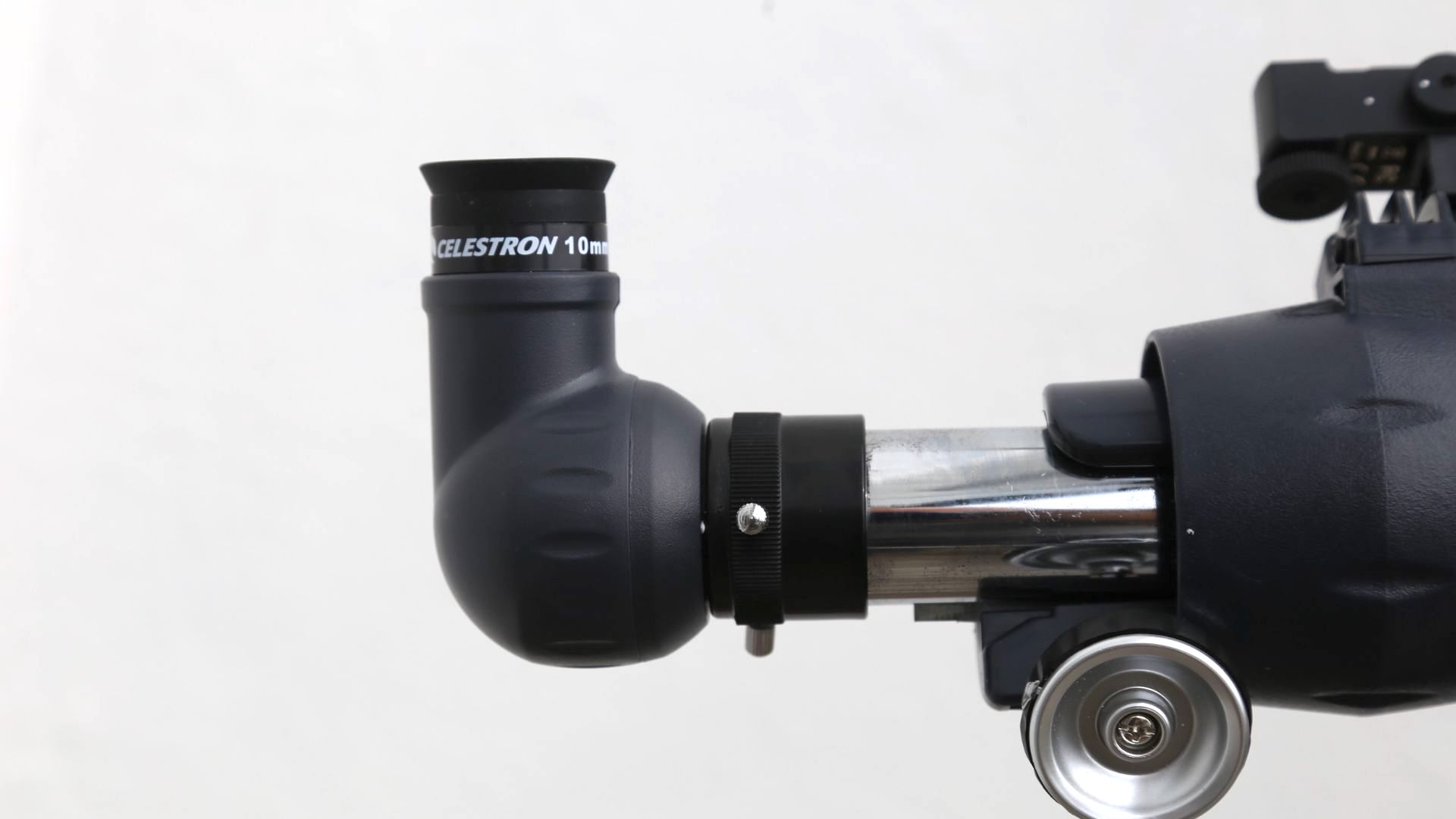
- Long focal ratio
- No 'false color'
- Dull deep-sky objects
The AstroMaster 70AZ has a physical advantage over rivals when looking at planets and the moon. Lots of achromatic refracting telescopes aimed at beginners have a nasty side-effect when looking at bright objects like planets and the moon. Known as chromatic aberration or 'false color', it's evident as a purple or pinkish halo around planets and the moon. The AstroMaster 70AZ gets around that issue with its unusually long length, which helps keep planets and the moon looking natural. In my observations of both Jupiter and Saturn I found virtually no trace of false color, which looked much better in the AstroMaster 70AZ than in a shorter refractor I had close by.
Breaking space news, the latest updates on rocket launches, skywatching events and more!
Viewed through the wider 25mm eyepiece — which gave by far the sharper view — Saturn’s rings were obvious, as were Jupiter’s moons. What I did notice is that for all the natural-looking color there was some noticeable glare from Jupiter and the moon, the former viewed when close to its bright ‘opposition’. There was always a little light spilling out left and right from the giant planet, which could be down to the Amici prism in the erect image diagonal. I found the rack and pinion focuser easy to use.

Sadly, what the AstroMaster 70AZ gives with its long tube length for viewing planets and the moon it takes away when it comes to deep sky objects. The AstroMaster 70AZ's aperture is just 2.76-inch/70 mm and its focal ratio is just below f/13. Calculated by dividing focal length (900 mm) by its aperture (70 mm), a long focal ratio enables a higher magnification and narrower field of view.
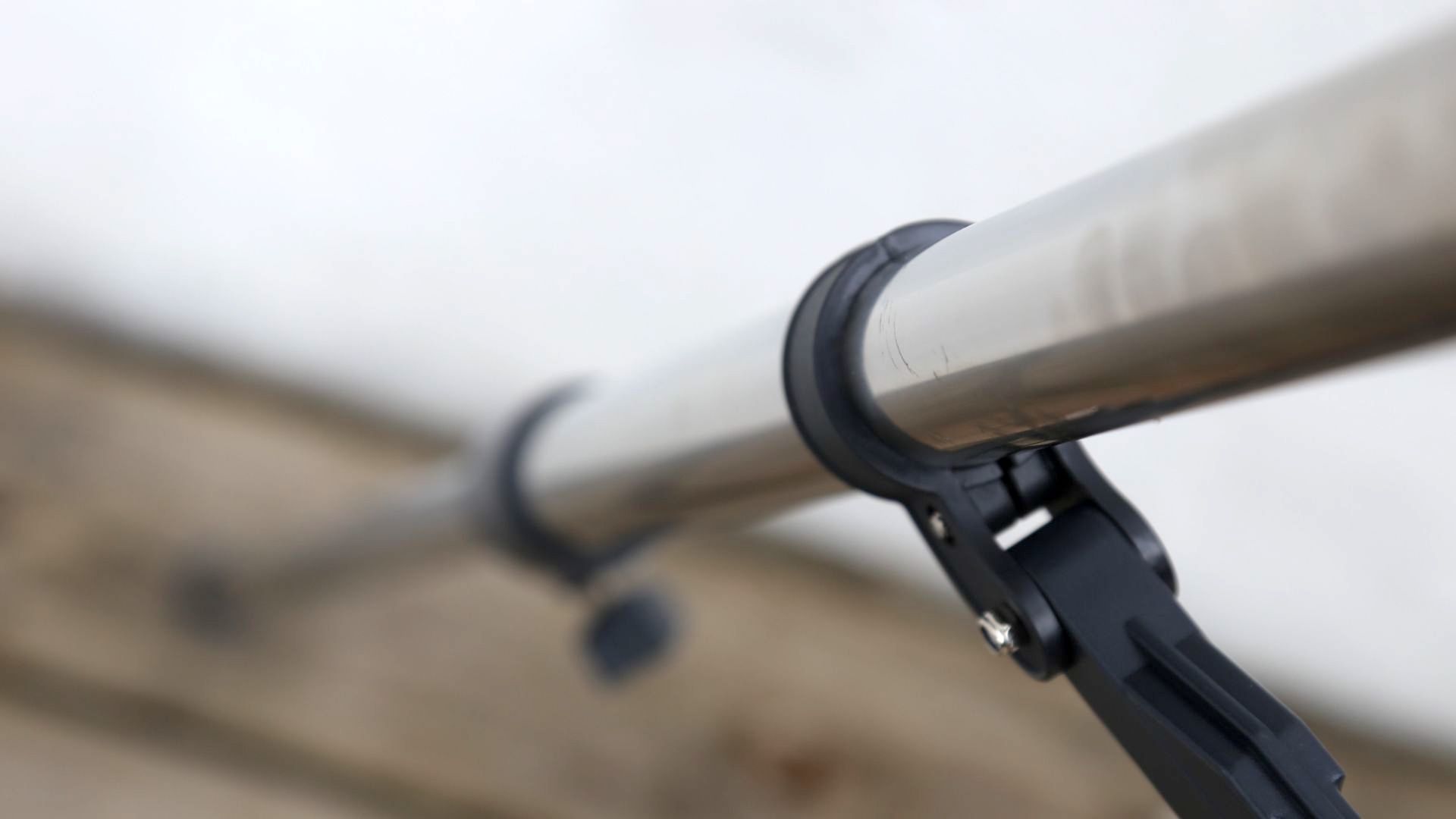
However, f/13 is too low. It means there's a lack of light coming into the optics, which results in the AstroMaster 70AZ really struggling with deep-sky objects. Star clusters lack sparkle and the Andromeda galaxy (M31) is not nearly as distinct as on telescopes designed for the job, which tend to have a focal ratio of f/4 to f/5.
That restrictive focal ratio also means that the AstroMaster 70AZ's limiting magnitude (the apparent magnitude of the faintest object it can see) is just 11.7, which is a lot lower than on rival telescopes.
Optically speaking the AstroMaster 70AZ is only worth considering if you have little ambition beyond planets on the moon.
Celestron AstroMaster 70AZ telescope: Functionality
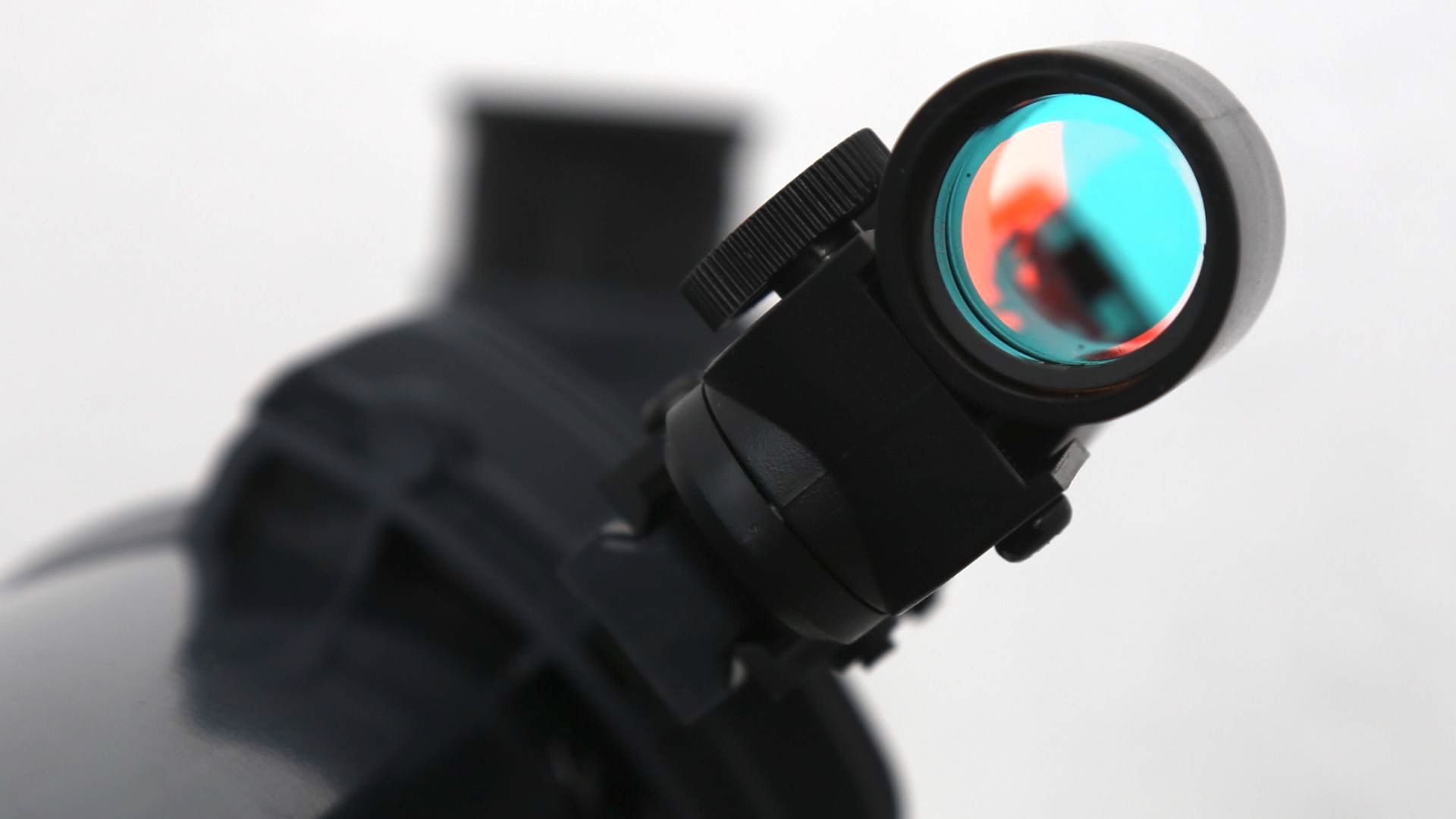
- Lacks slow-motion controls
- Difficult to lock onto targets
- StarPointer finderscope disappoints
The AstroMaster 70AZ is a cinch to set up, but tricky to use. The lightweight tube connects to the tripod via a slide-in Vixen-style dovetail that’s just about long enough. At 7.6 lbs/3.44 kg this is not a particularly heavy telescope, though in most homes it's probably best stored with the tripod at half height and extended only when it's outside.
Despite having a more solid tripod than many other tripods telescopes of its ilk, the AstroMaster 70AZ isn’t particularly easy to aim and secure in place. It suffers from overreach, recoil and droops while being manipulated between various targets, which makes it hard to keep a target in the eyepiece. That’s not at all unusual for telescopes of this low price. Its alt-az locks do a basic job indeed and all the pan handle and clutch can do is reduce the problem slightly. The entire set-up lacks the precision that's badly needed when hopping between objects in the night sky.
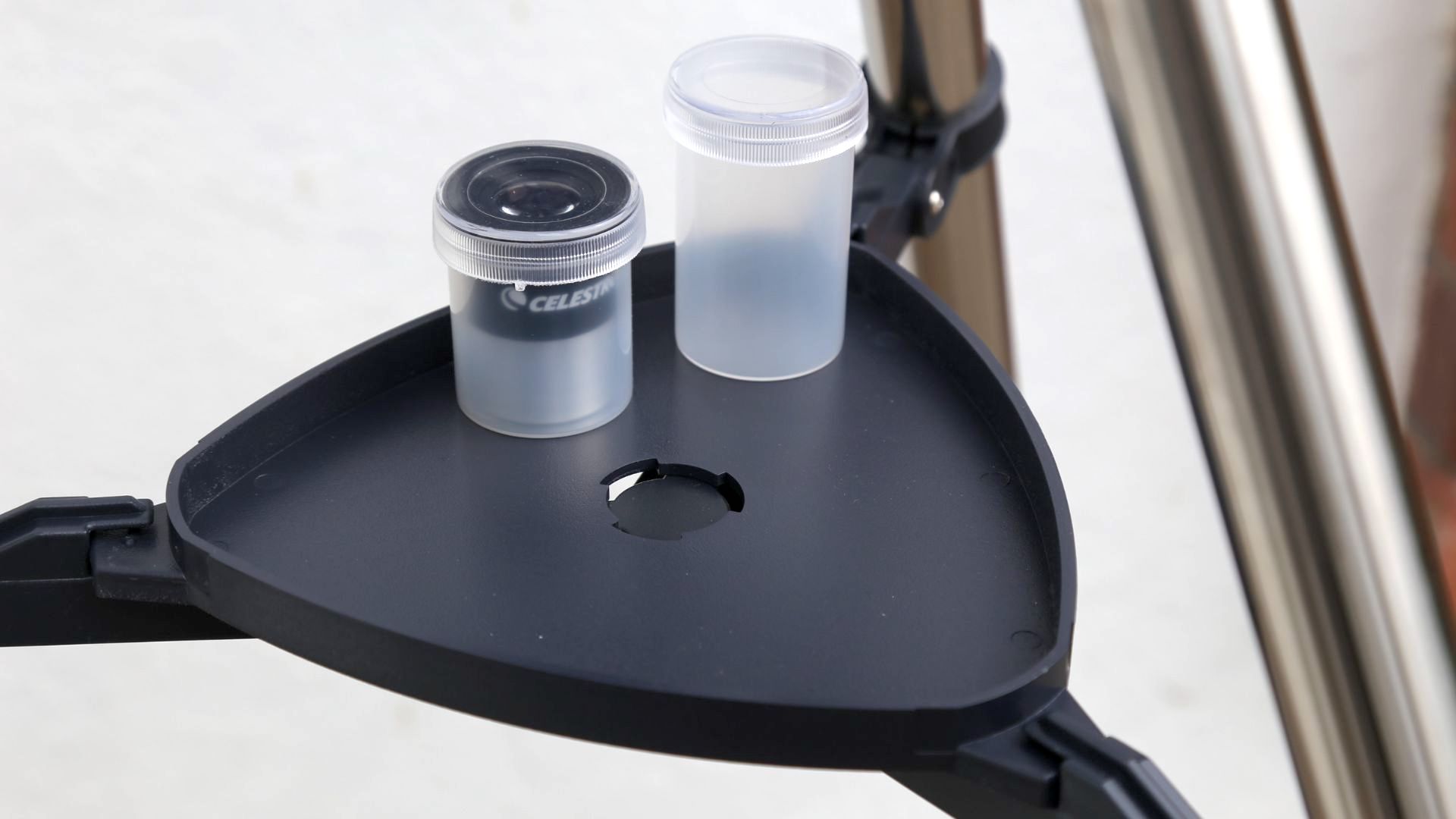
Despite being nicely positioned close to the eyepiece the red dot-equipped StarPointer finderscope doesn’t help much, being of low quality and almost impossible to align with the field of view in the eyepiece. It's consequently much harder than it should be to get planets (let alone deep sky objects) in its field of view. So while the AstroMaster 70AZ may seem like an affordable and tempting proposition, it's likely to frustrate both beginners looking for an easy to use telescope and more experienced observers after optical quality.
Should you buy the Celestron AstroMaster 70AZ telescope?
Although it's a relatively small investment, a low price is not enough to earn the AstroMaster 70AZ the status of being a good beginner telescope. For that, it needs to be easy to use and offer impressive use of a wide range of objects in the night sky.
Reasonably small and affordable telescopes like the AstroMaster 70AZ are often presumed to be aimed at beginners and young users. However, despite being a typical design and build aimed at beginners we’re not convinced that the AstroMaster 70AZ is going to hold the attention of new users for long.
If the Celestron AstroMaster 70AZ telescope isn’t for you
For a telescope that’s much easier to aim go for something from Celestron's StarSense Explorer line-up such as the Celestron StarSense Explorer 8-inch Dobsonian, which comes with a smartphone holder and an impressive app that guides you to targets just like a sat-nav in cars. It also lets a lot more light in and moves in a much more precise manner. If money is no barrier and you want to indulge in super-easy astrophotography by smartphone then the Vaonis Stellina Observation Station & Hybrid Telescope is hard to beat, which we rated four stars out of five in our review.

Jamie is an experienced science, technology and travel journalist and stargazer who writes about exploring the night sky, solar and lunar eclipses, moon-gazing, astro-travel, astronomy and space exploration. He is the editor of WhenIsTheNextEclipse.com and author of A Stargazing Program For Beginners, and is a senior contributor at Forbes. His special skill is turning tech-babble into plain English.
